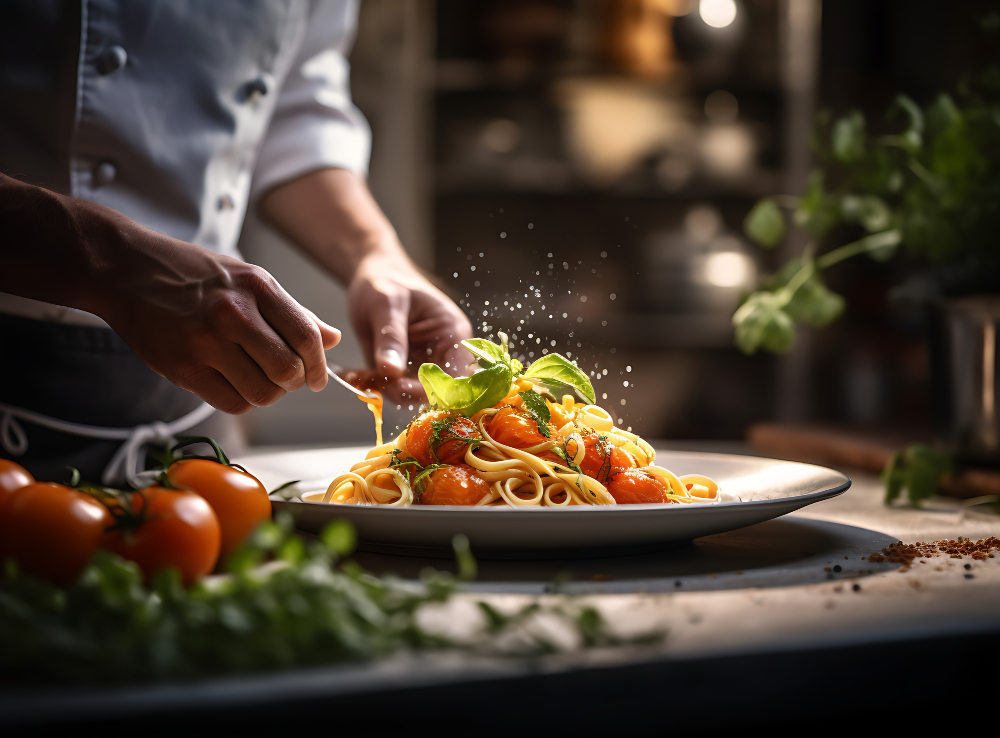Restaurant Industry Trends And How To Analyze Them With Web Scraping

In the midst of the COVID-19 crisis, restaurants are trying to stay in business, and restaurant-goers are trying to save their favorite local spots. Living in New York, there are seemingly infinite options of bars, restaurants, and cafes to support. It is almost impossible to walk around a trendy neighborhood without seeing lines for certain popular restaurants growing while neighboring establishments struggle to stay in business. Whether by creating “Insta-worthy” meals or the perfect outdoor seating arrangements, restaurants must use their imagination to strive in such a competitive industry.
Thankfully, restaurants and customers have more data than ever before to help them make the best decisions. With web scraping, restaurants can discreetly scope out the competition, identify restaurant industry trends, and make the best menu and setting choices to stand out amongst the crowd. Customers can use web scraping to compare prices, reviews, and find great local spots to support!
If you already know the basics of big data and web scraping, use the table of contents below to navigate the article and find how to use this data to help your restaurant.
Table of Contents
1. How Big Data Changed The Restaurant Industry
2. How Do Websites Pull In Restaurant Data?
3. How To Use Data And Figure Out How The Restaurant Industry Is Doing
4. Scraping Is The Perfect Way To Help Your Restaurant Research
How Big Data Changed The Restaurant Industry

Many industries, especially the restaurant industry, were changed by big data. Big data is a term that applies to data sets too large and varied to be understood and organized by basic programming tools. Before big data, restaurants served people on-site or offered delivery by calling in an order. With delivery apps, customers can more easily personalize their orders by leaving special notes and adding extras to their meals. More and more restaurants use table-side tablets to help the customization and payment process. This new technology allows restaurants to compile data and create customer profiles like never before. It is now easier to see what people order the most, how they customize it, and their payment preferences. For example, if you see that most people order chips on the side when they order tacos, you can then think about bundling the two into a value meal instead of selling them separately. Additionally, most apps and payment tablets give you the ability to give feedback right away, making it easier for restaurants to receive ratings and reviews in one place.
Because the restaurant industry is highly competitive, it is hard to stand out (especially in big cities) unless you are offering something new and unique. Thankfully, big data helps restaurants better understand competition and customer desires. With the popularity of review sites and delivery apps, it is easier than ever for restaurants to analyze their most popular menu items, grow their customer base, and get immediate service feedback. Here are some more ways to use scraping to grow your business.
How Do Websites Pull In Restaurant Data?
Web scraping is one way that websites can do this, but what is web scraping?
Web scraping, according to Wikipedia, refers to the process of using software to automatically collect public data from websites. (Note: public data means anything that’s not hidden behind a login. Scraping private information is not okay.) Specific data is pulled from websites and then organized into a shareable spreadsheet for analysis. While scraping can be done manually, tools like Scraping Robot make the process quick and organized, giving you more time to perform crucial restaurant industry analysis.
Using social media sites and Google analytics, restaurants can scrape these sites to understand their key demographics and the success or failure of their social media campaigns. With the complicated legality of web scraping, using a verified scraping tool can help you avoid these issues since most tools are built to not violate laws. Again, since the manual scraping process takes too long, using a scraping tool is the best way to pull in tons of data in the least amount of time, giving you space to be creative and true to your community.
How do restaurants retrieve data?
The popularity of delivery apps and table-side tablets give restaurants tons of data without doing much extra work. With this information, you can easily read reviews, see what menu items are the most popular, and understand the order trends of different customers. You can now tell how many returning customers versus new customers there are. Some restaurants even use sensors within the space to understand what times of day are busiest and how customers navigate the interior of the restaurant.
Data collection goes beyond the front of the house as smart kitchen technology becomes more popular. Smart fridges and other tech can track inventory and temperature, creating useful data that helps restaurants understand how to improve ordering and storage habits. When I worked at a Baskin Robbins in high school, I constantly had to record the freezer temperatures throughout the shift using only pen and paper. These reports are important for monitoring energy use and storing inventory correctly, but this data is also necessary for safety inspections. Thankfully, smart fridges and freezers collect this data themselves, freeing back of the house workers of such tedious tasks. Instead, they receive notifications when the temperature is off or inventory is low, giving them more time to focus on what really matters: the food.
Not only does this technology help restaurant owners save time and money, but it also helps with food safety. Certain kitchen technologies help with cooking time and food handling. Smart fridges especially help owners catch any malfunctioning or temperature changes before inventory possibly gets spoiled. Again, this data is useful to both restaurant owners and safety evaluators alike.
How To Use Data And Figure Out How The Restaurant Industry Is Doing

Thanks to delivery apps, review sites, and other websites dedicated to the restaurant industry, there are many options for collecting restaurant data. Restaurant data mining helps an establishment understand their competitors, understand themselves, and understand restaurant industry trends at large.
With younger generations more likely to be vegan or focused on eating less meat and animal products, understanding general dietary shifts is crucial to making good choices for the future. While there are likely always going to be meat-eaters, restaurants that do not provide vegan and vegetarian options may find themselves struggling with younger crowds that look for places that can accommodate all their friends’ dietary needs. By scraping for the most popular restaurants nearby, you can begin to see shifts in taste. If all the popular establishments have vegetarian options, then collecting this data would help you realize to add more vegetarian options to your menu to increase popularity amongst a certain demographic.
By scraping Google Places, those in the industry can see what kinds of restaurants are the most popular. You can also see the density of restaurants in your area. By better understanding these trends, those wanting to open a restaurant can plan in advance to avoid running neck-and-neck with your competition and establish your own space instead. Once you have your business, you can continue using Google Places to track the openings and closings of restaurants near and far, helping you identify larger trends within the industry. For example, store hours changed dramatically due to Covid. By keeping track of competitors’ hours with web scraping, you can stay updated on operating hour changes throughout this turbulent time.
Scraping Is The Perfect Way To Help Your Restaurant Research

Finding the perfect customer base
While restaurants in the past were meant to appeal to a wide range of customers, many successful eateries and chains today cater to specific crowds. In New York City, traditional diners are being replaced by vegan restaurants, restaurants that use locally sourced ingredients, fusion cuisine, and many other metrics. Whenever you perform restaurant data analytics, it is crucial that your age range and values are properly defined. For example, younger people might be looking for places with great drinks menus for going on dates, while older customers might value comfort and customization of meals.
Ideally, you want your restaurant to be attractive to many different kinds of visitors, but by scraping specific websites, you can identify the kinds of customers already likely to enjoy your food, hours, ambiance, and pricing. You can then build on this knowledge to create a better experience for those demographics and understand how to improve.
Improving your menu quality
Many restaurants today become known for singular dishes or drinks, especially ones that look good on social media! My friend and I once went to Korean coffee shop in NYC’s Lower East Side to get their infamous black latte, which I of course took a picture of. Needless to say, creating an iconic menu helps restaurants stand out in a competitive industry.
Scraping Google allows you to enter keywords and receive data on the top 100 search results for that keyword. You can also search by keyword and location by scraping Google Places. By searching a specific kind of cuisine or a singular dish, you can discover the competition nearby. This information is equally useful for consumers trying to navigate their way through many options to find the perfect dining experience.
Additionally, you can scrape any site to analyze restaurant sales data on your own menu items that are highly rated and sell the most, helping you make sure you are prioritizing the most popular dishes and drinks! It is important to scrape competitors’ current and past menus. By analyzing how responses changed alongside menu options, you can directly understand which menu changes yielded the most profit.
In this case, restaurant data mining can also help you make decisions moving forward. For example, if you serve multiple kinds of cuisine but your Italian dishes are the most successful, you will probably lean towards adding more italian dishes in the future. By understanding what sells now, you can make better decisions for the future too!
Adapt your pricing and hours
Performing effective restaurant data analysis goes beyond tasting the food. To be successful, restaurants must also find the most reasonable yet competitive prices and hours.
If you scrape a restaurant’s review page, you will be given information about hours, prices, locations, reviews, ratings, photos, and menu data. With many restaurant databases, you can gather vital information on the competition. Using this information, you can find hours where your competition isn’t open and create prices that are lower than top competitors but still profitable.
The individual reviews are useful as well. By gathering many reviews, you can get a sense of what the restaurant-goers in the community are looking for in menu items, ambiance, pricing, and hours. Since these factors vary from town to town, doing this specific research helps paint a picture of the specific restaurant industry trends in your area as opposed to just general industry opinions.
Build a foodie following on social media
As mentioned above, younger people love dishes and restaurants that photograph well for social media. Whether choosing beautiful plates or nice outdoor seating, ambiance is crucial for succeeding in the time of Covid. Even magazines like Architectural Digest are taking an interest in the best dining experiences that also help customers feel safe. Because people are always taking on some level of risk with outdoor dining, it is crucial the experience feels worth it.
By scraping social media platforms, you can get information on customers that post about you or your competition. When you scrape a profile, you retrieve data about their followers, other accounts they follow, and their interests. By learning more about the members of your community, you can better tailor a dining experience to their needs, ensuring they feel safe while also getting much-needed relief and relaxation during a time of stress.
Social media is also useful in being able to see what kinds of photos people are posting when they visit your restaurant. Are certain dishes being posted again and again? Is the outdoor patio the star of the show? Recognizing what kinds of photos customers post to social media helps you expand upon those aspects. If one menu item is posted about consistently, are there ways you can make it even more aesthetically pleasing? If the ambiance is attractive, are there any specific photo opportunities you can create like having a cute neon sign or fun decorations? By asking these tough yet important questions while using web scraping tools, your restaurant research will be more fruitful and lead you to success!
Conclusion
The restaurant industry is highly competitive. With evolving competition, it is even more crucial that restaurants do the proper amount of restaurant research and data collection in order to stay afloat. With web scraping, restaurant owners can retrieve restaurant trends, sales, and traffic data to better understand the competition and themselves.
By using a tool like Scraping Robot, owners can find the perfect demographic to serve and find creative ways to engage that demographic whether that be by adding fun menu items or creating an Insta-worthy outdoor ambiance. However you use web scraping, it is imperative that you take the time to do restaurant data analysis in order to grow!
The information contained within this article, including information posted by official staff, guest-submitted material, message board postings, or other third-party material is presented solely for the purposes of education and furtherance of the knowledge of the reader. All trademarks used in this publication are hereby acknowledged as the property of their respective owners.

